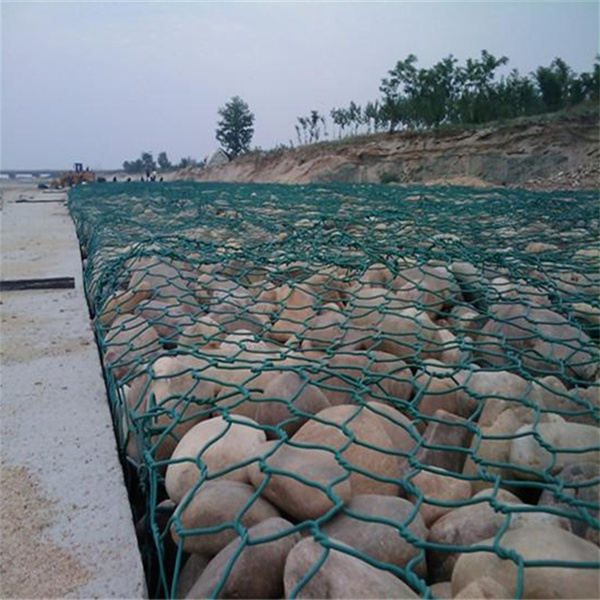Pro . 15, 2024 06:23 Back to list
Understanding the Role and Definition of Gabion Manufacturing Facilities
Understanding Gabion Factories Definition and Functionality
Gabions have historically been utilized in civil engineering, landscaping, and environmental projects for their strength, durability, and versatility. The term gabion originates from the Italian word gabbione, which means big cage. Gabions are essentially wire mesh containers filled with rocks, concrete, or soil. They are often employed for slope stabilization, erosion control, and flood protection, making them an integral part of modern infrastructure. In this article, we will delve into the definition of gabion factories, their production processes, and their growing importance in contemporary construction and environmental management.
Definition of Gabion Factories
Gabion factories are specialized manufacturing facilities that produce gabion products tailored for various applications. These factories operate with the primary goal of fabricating high-quality gabions that can withstand environmental forces like water flow, wind, and pressure from earth movements. Gabion factories not only produce standard sizes and shapes but also provide customized solutions based on the specific requirements of projects. The ability to customize gabion designs is particularly crucial in addressing unique environmental challenges in diverse geographical settings.
The production of gabions typically involves the manufacturing of the wire mesh used to create the cages, followed by the process of filling the cages with appropriate materials. The wire mesh is usually made from galvanized steel or coated with PVC to enhance its durability and corrosion resistance. The choice of filling material—whether natural stones, concrete blocks, or recycled materials—depends on the intended use of the gabion.
The Production Process
Gabion production in factories entails several key steps, ensuring that the resulting products meet industry standards and customer specifications. Here is an overview of the typical production process
1. Design Framework Engineers and designers collaborate to create gabion designs suited to specific uses. This stage considers factors such as load-bearing capacity, environmental conditions, and aesthetics.
2. Material Selection The selection of high-quality materials is essential for the sustainability and performance of gabions. The wire mesh is crafted for tensile strength and resistance to corrosion, while the filling materials must be durable enough to maintain stability and structural integrity.
define gabion factories

3. Fabrication of Wire Mesh The wire mesh is manufactured using advanced machinery that cuts, weaves, and shapes the wire into the desired forms. The gabion boxes typically come in various dimensions, accommodating a wide range of project needs.
4. Filling Process Once the wire mesh is prepared, the gabion containers are filled with the chosen materials. This process may involve manual labor or machinery, depending on the scale of production and the size of the gabions. It is crucial that the filling is compact and evenly distributed to avoid any structural weaknesses.
5. Quality Control After production, each gabion undergoes rigorous quality control to ensure adherence to safety and durability standards. This step is vital for maintaining the integrity of gabions in real-world applications, where they are subjected to various environmental stresses.
The Role of Gabion Factories in Construction and Environmental Management
Gabion factories play a vital role in both construction and environmental management. In construction projects, gabions provide an effective solution for retaining walls, erosion control, and landscaping features. Their ability to blend with natural landscapes makes them a popular choice among architects and engineers.
In environmental management, gabions have emerged as a critical tool for mitigating erosion in rivers and shorelines. Their porous structure allows water to pass through while stabilizing the surrounding soil, reducing the risk of landslides and flooding. Furthermore, gabions can be filled with recycled materials, promoting sustainability and reducing landfill waste.
As global awareness of environmental issues grows, the demand for gabions is expected to rise. Gabion factories are poised to innovate and adapt their production processes to meet evolving standards related to climate change and sustainability.
Conclusion
Gabion factories represent a fusion of engineering, design, and environmental science. Their production processes and smart applications address critical infrastructure needs while promoting ecological sustainability. As we continue to confront the challenges posed by climate change and urbanization, gabion technologies will remain essential tools in our efforts to create resilient ecosystems and sustainable communities. Whether for construction projects or environmental restoration, gabions stand as formidable solutions that combine strength with functionality.
-
Visualizing Gabion 3D Integration in Urban Landscapes with Rendering
NewsJul.23,2025
-
The Design and Sustainability of Gabion Wire Mesh Panels
NewsJul.23,2025
-
The Acoustic Performance of Gabion Sound Barriers in Urban Environments
NewsJul.23,2025
-
Mastering the Installation of Galvanized Gabion Structures
NewsJul.23,2025
-
Gabion Boxes: Pioneering Sustainable Infrastructure Across the Globe
NewsJul.23,2025
-
Custom PVC Coated Gabion Boxes for Aesthetic Excellence
NewsJul.23,2025
-
Installation Tips for Gabion Wire Baskets in Erosion Control Projects
NewsJul.21,2025






